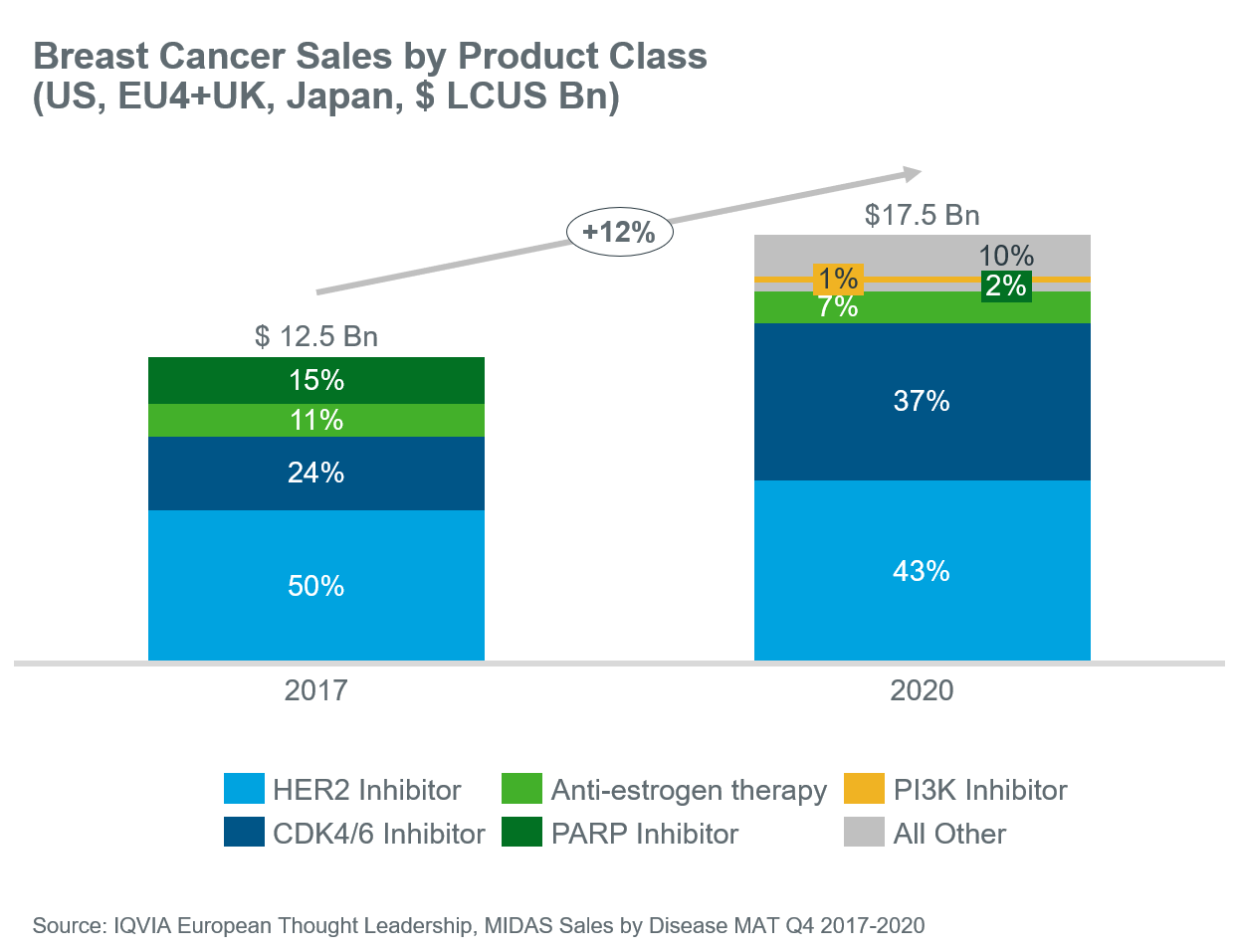
























- Blogs
- MIDAS Sales by Disease Insight Series #4
Breast cancer treatment pioneered some of the earliest targeted biologics in oncology and since then, therapy options have increased significantly as new biomarkers were identified and targeted products developed. The figure below highlights key classes of targeted therapies used to treat breast cancer patients today and how the value share has changed for these classes over time.
More than a decade after the launch of Herceptin (trastuzumab), there is now a franchise of HER2 Inhibitors. These include new molecules such as Perjeta (pertuzumab), Tukysa (tucatinib) and antibody drug conjugates such as Kadcyla (ado-trastuzumab emtansine) and Enhertu (trastuzumab deruxtecan). Collectively HER2 Inhibitors still hold 43% of the breast cancer market share today.
There are have been two important developments impacting HER2 Inhibitors, namely newer sub-cutaneous formulations and biosimilars. Sub-cutaneous formulations are an incremental innovation that has been valuable during the pandemic as a way to reduce administrative burden and divert vulnerable patients away from crowded hospitals. Biosimilars of trastuzumab have offered a way for healthcare systems to generate savings that can be used to increase access for patients.
CDK4/6 Inhibitors such as Ibrance (palbociclib), Verzenio (abemaciclib) and Kisqali (ribociclib) have been a welcome innovation in the hormone receptor positive, HER2 negative setting where targeted options were limited, with 37% market share in overall breast cancer and high growth by value.
Today, almost all patients are tested for hormone receptors ER, PR as well as HER2 to guide with their treatment path however the number of biomarkers have consistently increased as more targets and therapies have emerged such as PI3K Inhibitor Piqray (alpelisib).

To learn more about IQVIA MIDAS Sales by Disease, Click here.
